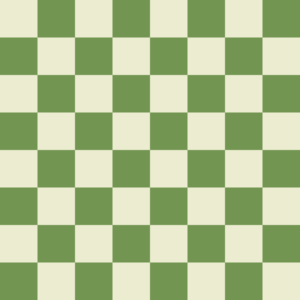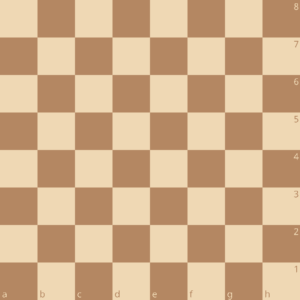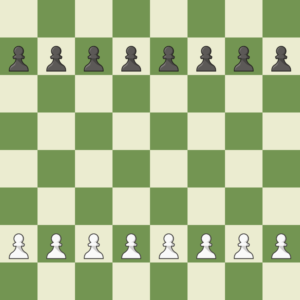I played chess with multiple persons and in several places in my early days of playing chess. I saw the playing style doesn’t match with one place to another. I see the opponent’s king on both my right and left side in different places with the same color-piece I’m playing. I had almost accepted it that chess had variations across regions until I discovered the very basic mistake al were doing; the board setup! If you are intending to learn chess lately, do consider to have a clear idea of the chessboard itself, its orientation in the game as well as the pieces setup at the start of a chess match. And here I am to help you to get familiar with all of these. Let’s get started!
The Layout of a Chessboard
A chessboard is an 8×8 grid, made up of 64 squares. The entire board has an alteration of two colors. One is light and another is dark, generally white as the light color and black as the dark color.


You can spot that the white or white-like squares in both chess.com and lichess.org act as light squares and the remaining color in respective boards are the dark squares. The pieces’ colors are corresponding to the board colors; light colored pieces and dark colored pieces.
Orientation of the Board
You know the chessboard layout now. Which way do you place the board before setting up all the pieces? You must place the board in such a way that you will have the light square of the lower-most row on your right, and the dark square of the lower-most row on your left side. Remember, “light is right”! You may have noticed some numbers and letters around the frame of the board. These are to name each 64 squares, which is called the Notation.


The Pieces Setup
Now that you know the chessboard itself and how to position it, let’s put your arsenal, the pieces, in the right squares and prepare for the battle!
Before positioning all the pieces, let’s have a glimpse at every chess piece. There are six types of pieces in chess. Pawn, Rook, Knight, Bishop, Queen, and King.

Pawn
Each player controls 16 squares at the starting of a match. 8 of them are occupied by the pawns. The pawns are positioned at the second last row from each player and the entire row is filled with pawns. Congratulations! Now you have half of the piece setup knowledge. Let’s move on to the next. The rooooooook!!!

Rook
Each player has two rooks. Both of the rooks are placed at the two corners of the lower-most row from each player.

Knight
A player’s arsenal is decorated with two knights. The knights occupy the squares right by the rooks.

Bishop
Although I haven’t told anything about how the pieces move, I would like to mention a little about the bishops. Just like the rooks and the knights, there are two bishops for each side; one in light color and the other in dark color. They move diagonally. Which means that you cannot have same colored bishop in your position unless you make a pawn promotion. Bishops are placed right next to the squares the knights occupy.

Queen
You are left with two squares. These are for the king and the queen. Queen is placed in a square corresponding to its own color. For instance, if it’s a black-and-white board and the pieces are of black and white color as well, then the white queen will be placed in the white square and black queen in the black square. Don’t put the queen in wrong square. Otherwise, you will face trouble castling, and you will face the very problem I experienced.

King
There is only one square available now of the 16 squares reserved for you. This one belongs to the most valuable piece on the board, the king.

All the images are generated from chess.com and lichess.org.




